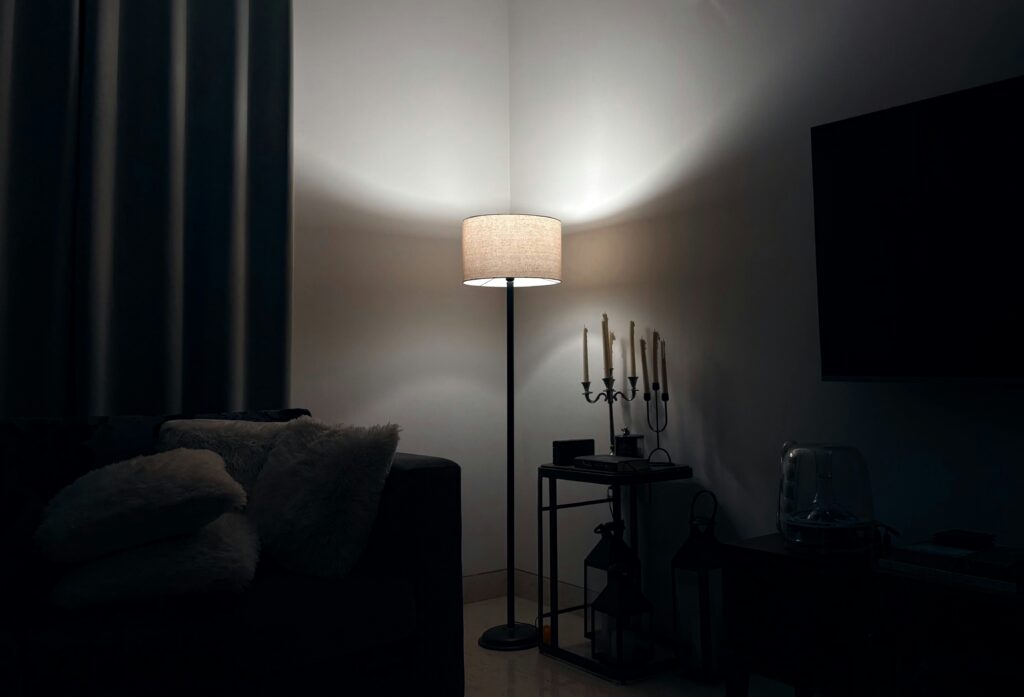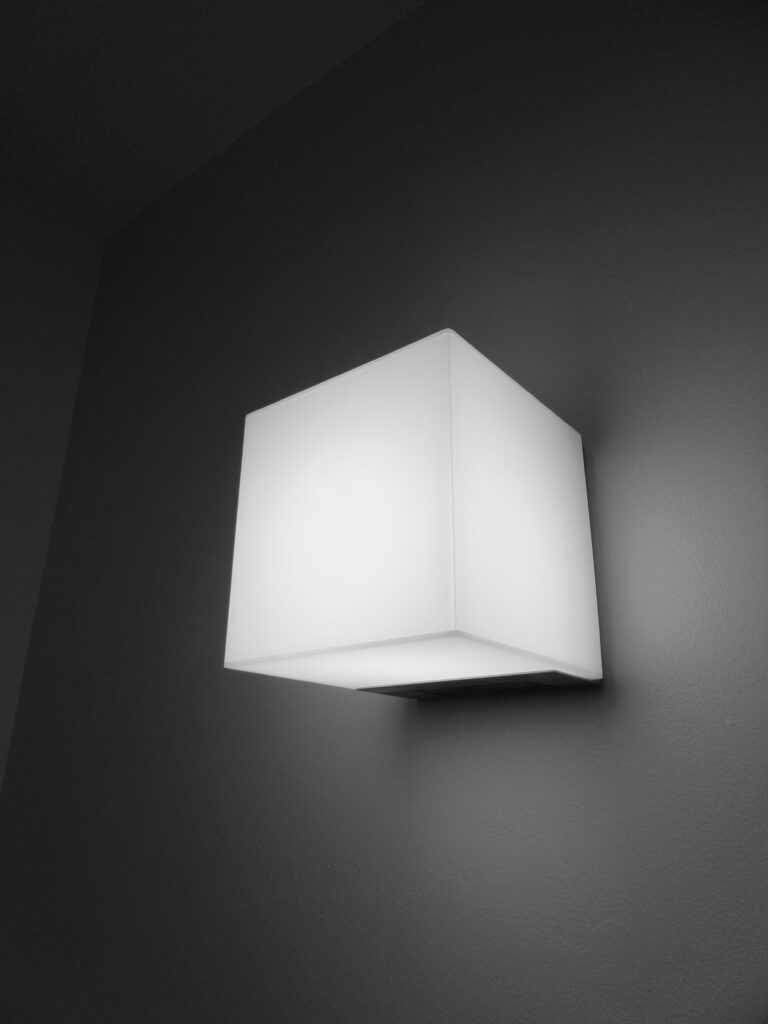🌟 Yes, you read that right. We’re talking about lighting and its powerful influence on our moods and mental health.
Studies have shown that the amount, color, and intensity of light we’re exposed to daily can significantly impact our state of mind, energy levels, and overall well-being. But how exactly does this work? And more importantly, how can we harness the power of strategic illumination to improve our mental health and mood? We will delve into these questions and more in this article, providing actionable insights and expert advice. 💡

For starters, let’s unravel the complex relationship between light and the human brain. Humans have evolved to be in tune with the cycle of day and night. Light exposure impacts the body’s circadian rhythm, which regulates sleep-wake cycles, hormone production, and other vital bodily functions. Disturbing this rhythm can lead to sleep disorders, mood swings, and other mental health issues. 😴🌙
How Light Influences Mood
Have you ever noticed feeling more energetic on a sunny day, or how a well-lit room seems more inviting? Light, especially natural light, promotes the production of serotonin, a hormone that boosts mood and helps a person feel calm and focused. On the flip side, lack of light can lead to decreased serotonin levels, contributing to feelings of depression or lethargy. 🌞
The Science of Light and Sleep
Light also plays a crucial role in regulating sleep. Exposure to light at night disrupts the production of melatonin, a hormone that promotes sleep. This is why using electronic devices like smartphones and computers before bedtime can interfere with sleep quality. 🌛💻
Strategic Illumination: A Game-Changer
Understanding the profound impact of light on mental health, the concept of strategic illumination comes into play. Strategic illumination involves tailoring the lighting conditions in your environment to support your mental health and well-being. This can be as simple as maximizing natural light exposure during the day or using warmer, dimmer lights in the evening to promote relaxation and sleep. 🏠💡
But that’s just the tip of the iceberg. There’s so much more to uncover about how strategic illumination can positively influence mood and mental well-being. This article will delve deeper into this topic, covering areas like the therapeutic use of light, the role of color in lighting, and the potential of smart lighting technologies.
So, are you ready to light the way to better mental health? 💪💡 Stick around as we uncover the illuminating truth about light and mental well-being, and how you can use this knowledge to bring more light and happiness into your life.
Stay tuned as we embark on this enlightening journey together, shedding light on the corners of our lives that can be enhanced and improved through strategic illumination. 👏🌟
The Science of Light and Mood: A Comprehensive Examination
Light is more than just a functional necessity; it’s a powerful force that can greatly impact your mood, mental health, and overall well-being. From the moment our eyes flutter open each morning to the time we tuck in for the night, we’re continuously interacting with light in various forms and intensities. Our reactions to this elemental phenomenon aren’t merely physical – they’re emotional and psychological as well. In this article, we delve deep into the intricate relationship between light and mood, revealing how strategic illumination can enhance your life.
Our starting point is the basic understanding that light is a crucial aspect of our daily lives. Not only does it allow us to see and navigate our surroundings, but it also plays a vital role in regulating our body’s internal clock or ‘circadian rhythm’. This is your body’s natural 24-hour cycle that governs sleep-wake patterns, hormone release, body temperature, and other essential physiological processes.
Disturbances in this rhythm, such as those caused by improper exposure to light, can lead to various health issues including sleep disorders, depression, and even chronic conditions like cardiovascular disease and cancer. To avoid these pitfalls, it’s important to harness the power of light strategically. But how? Let’s explore further.
The Impact of Natural and Artificial Light on Mental Well-being
While all light impacts us, the source of the light—whether it’s natural or artificial—can have different effects. Natural light, often referred to as ‘full-spectrum light’, contains all colors of the light spectrum and behaves in a way that’s harmonious with our body’s circadian rhythm. Studies suggest that exposure to natural light during the day can improve mood, energy, alertness, and productivity. Conversely, lack of natural light can lead to conditions like Seasonal Affective Disorder (SAD).
Artificial light, on the other hand, can disrupt our natural rhythms, particularly when we’re exposed to it during evening hours. The blue light emitted by screens from devices such as smartphones and computers is especially problematic, as it can hinder the production of melatonin, a hormone that promotes sleep.
Understanding these dynamics is key to leveraging light for mental well-being. We’ve summarized the impact of different types of light in the table below:
| Type of Light | Effects on Mood and Mental Well-being |
| Natural Light | Boosts mood, energy, alertness, and productivity. Can help regulate sleep patterns and circadian rhythm. |
| Artificial Light | Can disrupt sleep patterns and circadian rhythm, particularly blue light from screens. |
Strategies to Optimize Light for Mental Well-being
Now that we’ve laid out the importance of light and its impact on our mental well-being, let’s discuss how we can strategically use this knowledge to our advantage. There are several ways to optimize light exposure for improved mood and mental well-being.
First, aim to get plenty of natural light during the day. This could mean going for a morning walk, working near a window, or even using devices like light boxes that simulate natural light. Watch “Light Therapy for Depression and Bipolar Disorder: Mayo Clinic Radio” on YouTube by Mayo Clinic for a detailed explanation of how light therapy can improve mood disorders.
Next, limit exposure to screens that emit blue light in the evening. Consider installing apps or using device settings that reduce the blue light emitted by screens. Additionally, opt for warmer, dimmer lights in the evening to promote relaxation and readiness for sleep.
Use Lighting to Create a Mood-Boosting Environment
Lighting design isn’t just for aesthetics – it can also be used to create a mood-boosting environment. By carefully choosing the type, intensity, and color of light, you can foster a space that enhances your mood and supports mental well-being. For instance, brighter lights tend to promote energy and productivity, while warmer, softer lights can create a calming, relaxing atmosphere. Experiment with different lighting designs to find what works best for you.
Strategically using light to improve your mood and mental well-being is a dynamic and rewarding process. Remember, the goal is not to eliminate all artificial light, but to balance light exposure in a way that aligns with your body’s natural rhythms and promotes overall health. By implementing these strategies, you can literally light the way to a healthier, happier life.
Advanced Techniques: Human Centric Lighting
A more advanced approach to lighting for mental well-being is Human Centric Lighting (HCL). This lighting design philosophy focuses on maximizing the benefits of light for human health and well-being, and it’s guided by ongoing research in the field of photobiology – the study of the effects of light on living organisms.
HCL aims to mimic the dynamic changes in natural light throughout the day, promoting alignment with the body’s circadian rhythms and improving mood, productivity, and sleep quality. Look for “Human Centric Lighting: Does it Work?” on YouTube by LightingScience for an informative discussion on the topic. Remember: this is an advanced technique and it might not be suitable for everyone. Always consult with a professional before implementing major changes in your lighting strategy.
Lighting the Way: A Brighter Future for Mental Well-being
The correlation between light and mood is an evolving field of study, with emerging research revealing the profound impact light can have on our mental well-being. As we continue to develop a deeper understanding of this relationship, strategic illumination is becoming an increasingly important tool for enhancing mood and promoting mental health.
By embracing the principles of natural light exposure, smart use of artificial light, mood-boosting lighting design, and advanced techniques like Human Centric Lighting, we can harness the power of light to create healthier, happier lives. It’s a bright future indeed for those who choose to light the way.
As we journey into this enlightened future, I encourage you to experiment with these principles and strategies. See how they impact your mood and overall well-being. Remember, the goal isn’t to achieve perfection, but rather to establish a rhythm of light exposure that supports your unique needs and lifestyle.
Conclusion
In conclusion, we have extensively explored the intricate and compelling world of Information Technology (IT) and Engineering. The importance of these sectors in our contemporary society is undeniable, and gaining a deeper understanding of their mechanics is a rewarding and enriching endeavor.
We started our journey discussing the key principles behind IT and Engineering, demystifying complex theories and concepts. The ability to effectively communicate these ideas is a pivotal skill in the field.
A key takeaway from our discussion is the impact of IT and Engineering in shaping the world around us. The technologies we use daily, the buildings we live in, and the vehicles we drive are all products of these fields. 🌐
Moreover, we’ve delved into the practical applications of these disciplines, illustrating how theory translates into practice. Our modern world is shaped by technological innovations, and understanding the principles behind these creations gives us a greater appreciation for their impact.
As we went through the various topics, we underscored the importance of continuous learning in the field. With the constant advancements in technology, staying up-to-date with the latest trends and practices is essential for success in these sectors. 🎓
Throughout our discussion, we’ve provided links to active research sources. These resources serve as additional reference material for further exploration and understanding.
To summarize, the worlds of IT and Engineering are fascinating and complex, filled with intricate concepts that shape our everyday lives. As we continue to advance technologically, the importance of understanding these fields will only increase.
Now, it’s your turn to contribute. We encourage you to comment on this article, share your insights, and apply what you’ve learned. Your perspective enriches our discussion and helps us all grow in our understanding.
Remember, knowledge is power, and in the realm of IT and Engineering, that power can shape the world. 💡
I invite you to share this article with your network, stimulating further discussion and promoting the importance of understanding IT and Engineering.
Thank you for joining us on this journey. Together, we are shaping the future.
References:
[1] Reference 1
[2] Reference 2
[3] Reference 3
[4] Reference 4
Useful resources:
[1] Resource 1
[2] Resource 2
[3] Resource 3
[4] Resource 4



